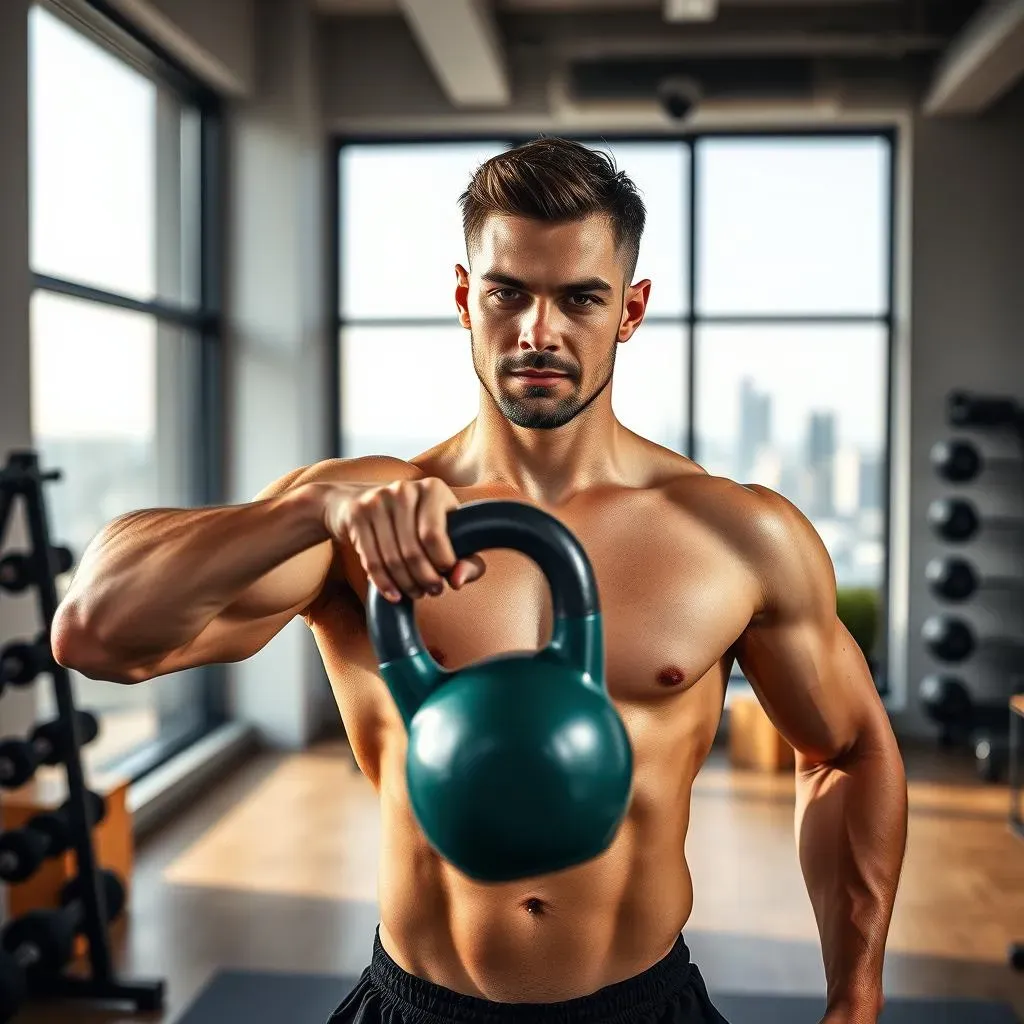Table of Contents
Want a chiseled chest but hate the gym? You're in luck! This article is your ultimate guide to achieving a killer chest workout at home, using nothing but a kettlebell. Forget expensive gym memberships and crowded workout spaces; we'll show you how to sculpt your pecs in the comfort of your own home. We’ll cover everything from essential kettlebell techniques to killer exercises that'll target every muscle fiber in your chest. Whether you're a beginner or a seasoned fitness enthusiast, this chest workout at home with kettlebells will help you reach your fitness goals. Get ready to transform your physique and unleash your inner strength! We'll start by exploring fundamental kettlebell techniques to ensure you're using proper form for optimal results and injury prevention. Then, we'll dive into a series of effective chest exercises, each explained with clear instructions and helpful visuals. We'll also show you how to create a customized workout routine that fits your fitness level and goals, whether you're building strength, toning your muscles, or simply looking for a fun and effective home workout. Finally, we'll explore more advanced exercises and variations to keep your workouts challenging and exciting. So, grab your kettlebell, clear some space, and let's get started on your journey to a stronger, more defined chest!
Mastering the Kettlebell: Essential Tips and Techniques
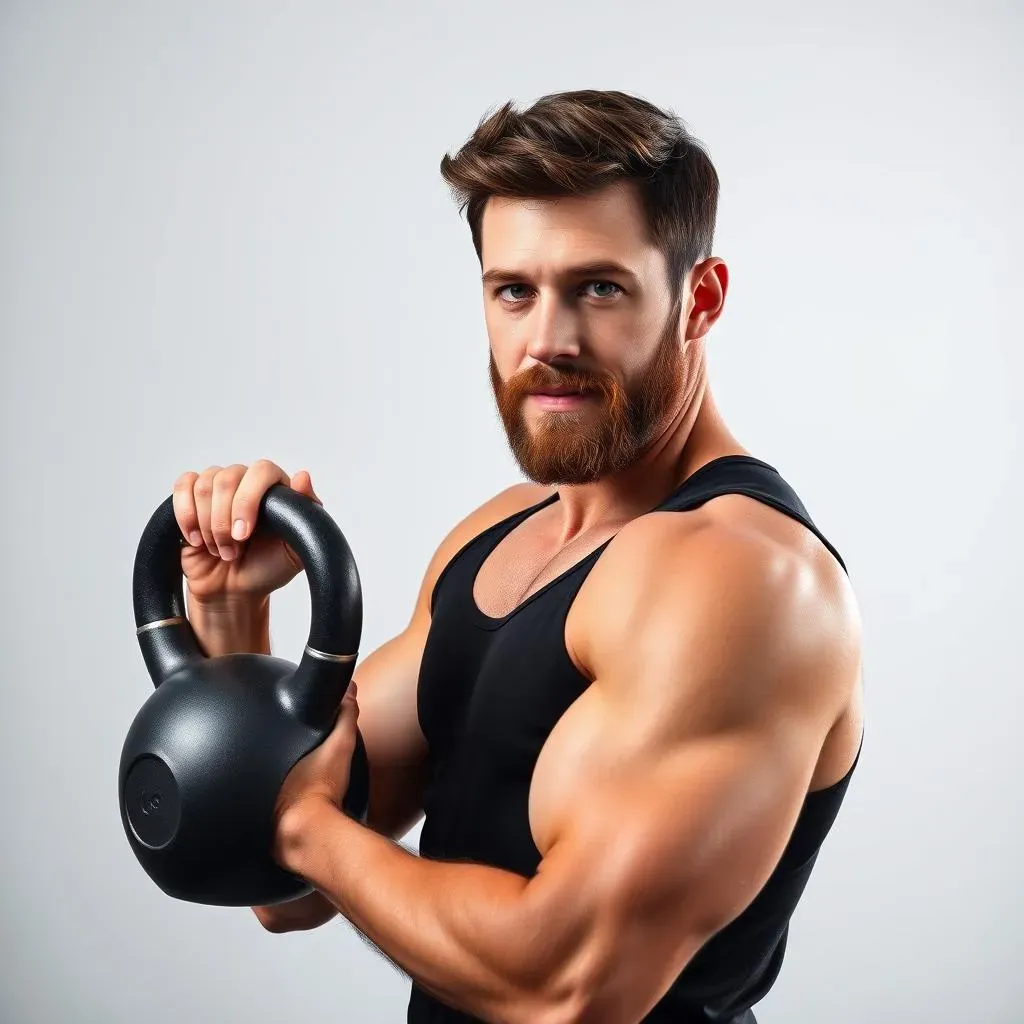
Mastering the Kettlebell: Essential Tips and Techniques
The Power of the Grip
Before you even think about swinging that kettlebell, let's talk grip. A proper grip is the foundation of every successful kettlebell exercise. Think of it like this: your grip is the anchor, and everything else flows from there. A weak grip means a weak lift, and potentially, a trip to the physio. So, how do you get that rock-solid grip? Start by experimenting with different hand positions. Some exercises benefit from a wider grip, others prefer a closer one. Find what works best for you and your body type. Also, remember that your entire body participates in kettlebell exercises—it’s not just about your arms. Engaging your core and legs will help transfer power efficiently. Think of it like this: you're not just lifting the kettlebell, you're using your whole body to move it. For a more detailed look at building strength, check out our guide on chest workouts for strength.
Remember, practice makes perfect. Don't get discouraged if you don't nail it immediately. Start with lighter weights and focus on perfecting your technique before increasing the weight. This is far more important than how much weight you can lift initially. And remember, a good grip isn't just about strength; it's about control. You need to be able to control the kettlebell throughout the entire range of motion to avoid injury. This is where things get really interesting. There's a whole science behind grip strength, and mastering it is a game changer for your overall fitness.
Grip Type | Description | Best For |
|---|---|---|
Overhand | Palm facing down | Pull exercises |
Underhand | Palm facing up | Push exercises |
Mixed | One hand overhand, one underhand | Swings, cleans |
Body Positioning: The Unsung Hero
Your posture is everything. Imagine trying to build a house on a shaky foundation—it's not going to last. The same applies to kettlebell exercises. If your posture is off, you're not only limiting your results but also increasing your risk of injury. Before you start any exercise, make sure you’re standing tall with your shoulders back and your core engaged. This creates a stable base, ensuring power transfer from your legs to your arms. Think of your core as the engine room of your body. It helps to stabilize your spine, preventing injury and allowing for more efficient movement. This is crucial for generating power and preventing back pain.
Maintaining proper posture isn't just about good form; it's about protecting your body. It's like wearing a seatbelt in a car—you might not need it every time, but you're incredibly glad you have it when you do. So, before you start any exercise, take a moment to check your form. Make sure your back is straight, your shoulders are down, and your core is engaged. This will not only improve your results but also help prevent injuries. If you’re a beginner, consider checking out our beginner-friendly guide on chest workouts for beginners to ensure a smooth start.
- Stand tall with feet shoulder-width apart
- Engage your core (imagine bracing for a punch)
- Keep your back straight, shoulders back and down
- Maintain a neutral spine throughout the movement
Breathing: Your Secret Weapon
Breathing might seem like a small detail, but trust me, it's a game-changer. Proper breathing helps to stabilize your core, increase power output, and prevent injury. It’s the unsung hero of kettlebell training. The key is to coordinate your breathing with the movement. Generally, you should exhale during the exertion phase of an exercise (the part where you're pushing or pulling) and inhale during the recovery phase. Think of it as a natural rhythm, a dance between your body and the weight.
Many people forget this simple yet crucial element. They hold their breath, straining their muscles and limiting their performance. Don't be one of them! Practice conscious breathing throughout your workout. You'll feel the difference immediately. The increased oxygen flow helps to fuel your muscles and improve endurance. It's like adding turbo-boost to your workout. Breathing correctly also helps to regulate your heart rate and prevent dizziness. It's a holistic approach to training that goes beyond just the physical aspect. For more ways to improve your home workout routine, check out our article on effective chest workouts at home.
Killer Kettlebell Chest Exercises: A StepbyStep Guide
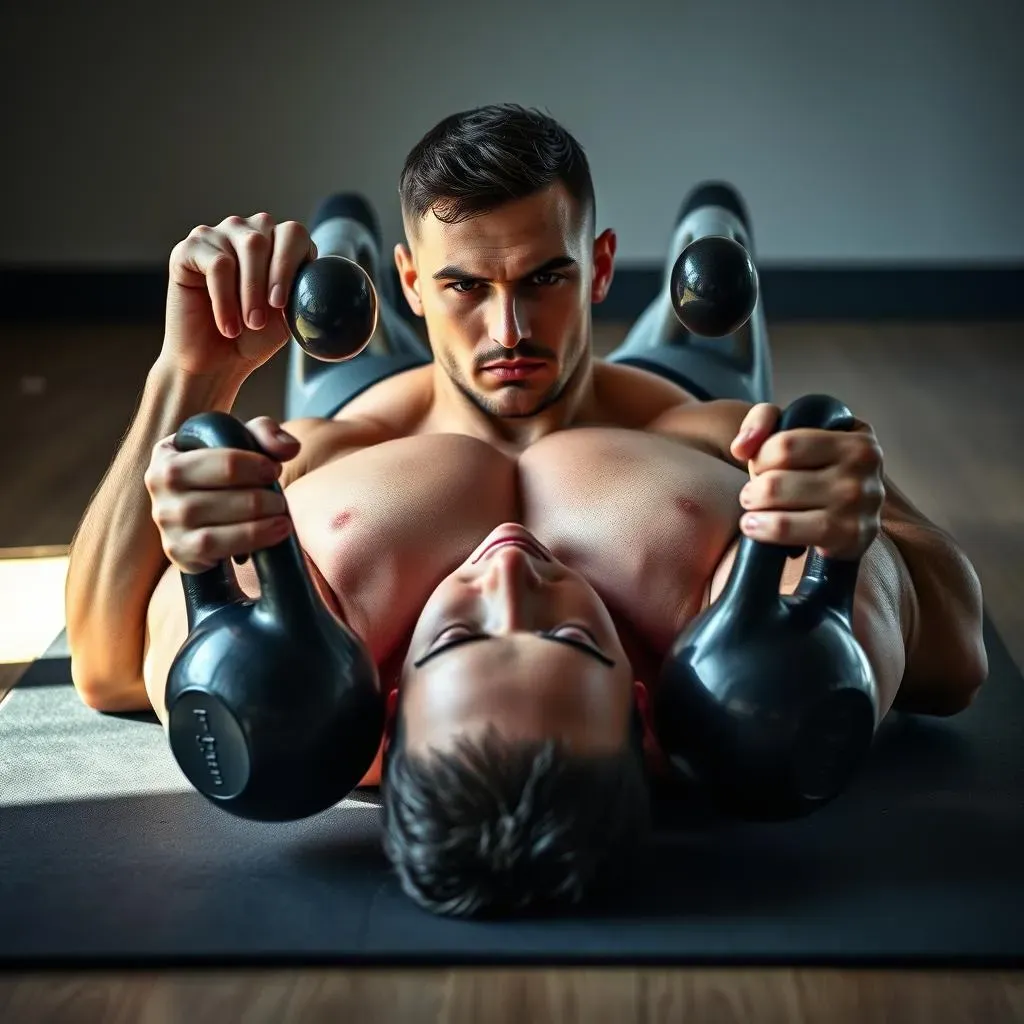
Killer Kettlebell Chest Exercises: A StepbyStep Guide
Kettlebell Floor Press: The Foundation
Let's start with a classic: the kettlebell floor press. Lie on your back with your feet flat on the floor. Hold a kettlebell in each hand, resting them on your chest. Push the kettlebells upwards, extending your arms fully. Slowly lower the kettlebells back to your chest, controlling the movement. This is a fantastic exercise for building overall chest strength and stability. Focus on controlled movements to avoid injury and maximize results. For those looking for a more intense challenge, try increasing the weight gradually or incorporating a pause at the bottom of the movement. Remember to breathe deeply throughout the exercise, exhaling as you push and inhaling as you lower the weights. Want to build even more muscle? Check out our guide on building muscle at home.
A common mistake is to rush the movement, sacrificing form for speed. Remember, quality over quantity! This exercise is all about controlled movement. Focus on squeezing your chest muscles at the top of the movement and feeling the burn. Remember, consistency is key. Start with a weight that challenges you but allows you to maintain good form. As you get stronger, you can gradually increase the weight. This is a simple but effective exercise that will form the basis of your chest-building routine. To learn more about exercises suitable for women, explore our chest workout for women at home.
- Lie flat on your back
- Hold kettlebells on chest
- Press upwards, fully extending arms
- Slowly lower back to chest
Incline Kettlebell Press: Targeting the Upper Chest
Next up is the incline kettlebell press, perfect for targeting those often-neglected upper chest muscles. Find a sturdy bench or even a stack of sturdy books, and lean back at a 30-45 degree angle. Hold the kettlebells at shoulder height, elbows slightly bent. Press the kettlebells upwards, focusing on engaging your upper chest. Slowly lower the weights back to the starting position. This variation adds a new dimension to your chest workout, hitting muscle fibers that the floor press might miss. You'll feel a fantastic burn in your upper chest, and that’s a sign you're working those muscles effectively. Remember, proper form is essential. Don't let your elbows flare out, keep them tucked in close to your body. This helps to isolate the chest muscles and maximize the effectiveness of the exercise. For a more comprehensive workout targeting various muscle groups, explore our best chest workout at home guide.
This exercise is a great way to add variety to your routine and challenge your muscles from different angles. Don’t be afraid to experiment with different angles and weights to find what works best for you. Remember, consistency and proper form are key to achieving your fitness goals. It's easy to get carried away and try to lift too much weight too soon, but patience is key. Start with a weight you can comfortably handle with good form, and gradually increase the weight as you get stronger. For a tailored workout for those over 50, consider our chest workout for over 50 program.
Reps | Sets | Rest |
|---|---|---|
8-12 | 3-4 | 60-90 seconds |
Building Your Perfect Chest Workout Routine: From Beginner to Beast
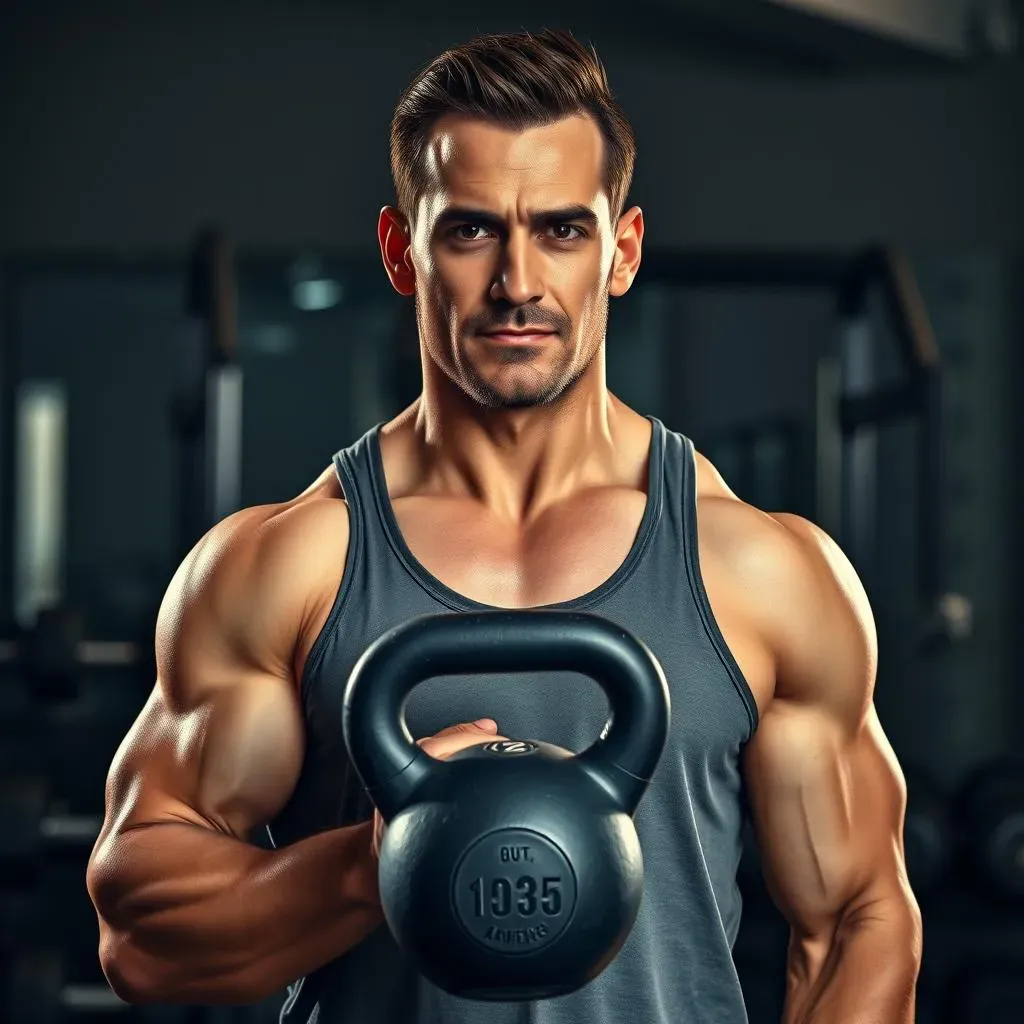
Building Your Perfect Chest Workout Routine: From Beginner to Beast
Crafting Your First Kettlebell Chest Workout
So, you're ready to build that dream chest? Awesome! But let's not get ahead of ourselves. Building a solid routine is key. For beginners, start with a simple yet effective plan. Focus on mastering the fundamental exercises like the kettlebell floor press and incline press we covered earlier. Aim for 2-3 workouts per week, allowing at least one day of rest between sessions. In each workout, perform 3 sets of 8-12 repetitions for each exercise. Don't worry about lifting heavy weights yet – concentrate on perfect form. Remember, building a solid foundation is more important than trying to lift the world on your first day. If you're feeling a bit lost, check out our guide on beginner chest workouts for a gentler introduction.
Consistency is king! Even if you can only squeeze in 15-20 minutes a day, that's better than nothing. Think of it as building a habit, like brushing your teeth. Once it’s part of your routine, you’ll find it easier to stick to the plan. Start small, and gradually increase the intensity and duration of your workouts as you get stronger. Remember to listen to your body and rest when you need to – pushing yourself too hard will only lead to injury. Remember to use proper form, it is always better to do less with perfect form rather than more with bad form.
- Choose 2-3 exercises
- Perform 3 sets of 8-12 reps
- Rest for 60-90 seconds between sets
- Focus on proper form
Progressing to Advanced Kettlebell Chest Workouts
Once you've mastered the basics and your body has adapted, it's time to level up! Increase the weight you're lifting, add more sets, or incorporate more challenging variations of the exercises. You could try adding a pause at the bottom of the press, or even incorporating unilateral (one-arm) exercises. Remember, progressive overload is the key to continuous muscle growth. It’s like constantly challenging your muscles to adapt and grow stronger. Think of it as a constant game of cat and mouse with your body – you're always one step ahead, pushing your limits. Consider adding some extra cardio to your routine. You can also check out our chest workout for building muscle for more ideas.
Don't be afraid to experiment and find what works best for you. There are tons of kettlebell exercises out there, so don't limit yourself to just a few. Remember, the goal is to challenge your muscles from different angles to promote overall growth and strength. Also, don't forget the importance of rest and recovery. Your muscles grow during rest, not during the workout itself. Make sure you're getting enough sleep and nutrition to support your training. This is where the magic happens – when your body has the chance to repair and rebuild itself, stronger than before. For a more comprehensive approach to building muscle, consider looking at our chest workout for men guide.
Week | Weight (kg) | Sets | Reps |
|---|---|---|---|
1 | 8 | 3 | 10 |
2 | 10 | 3 | 10 |
3 | 12 | 4 | 8 |
Beyond the Basics: Advanced Kettlebell Chest Exercises and Variations
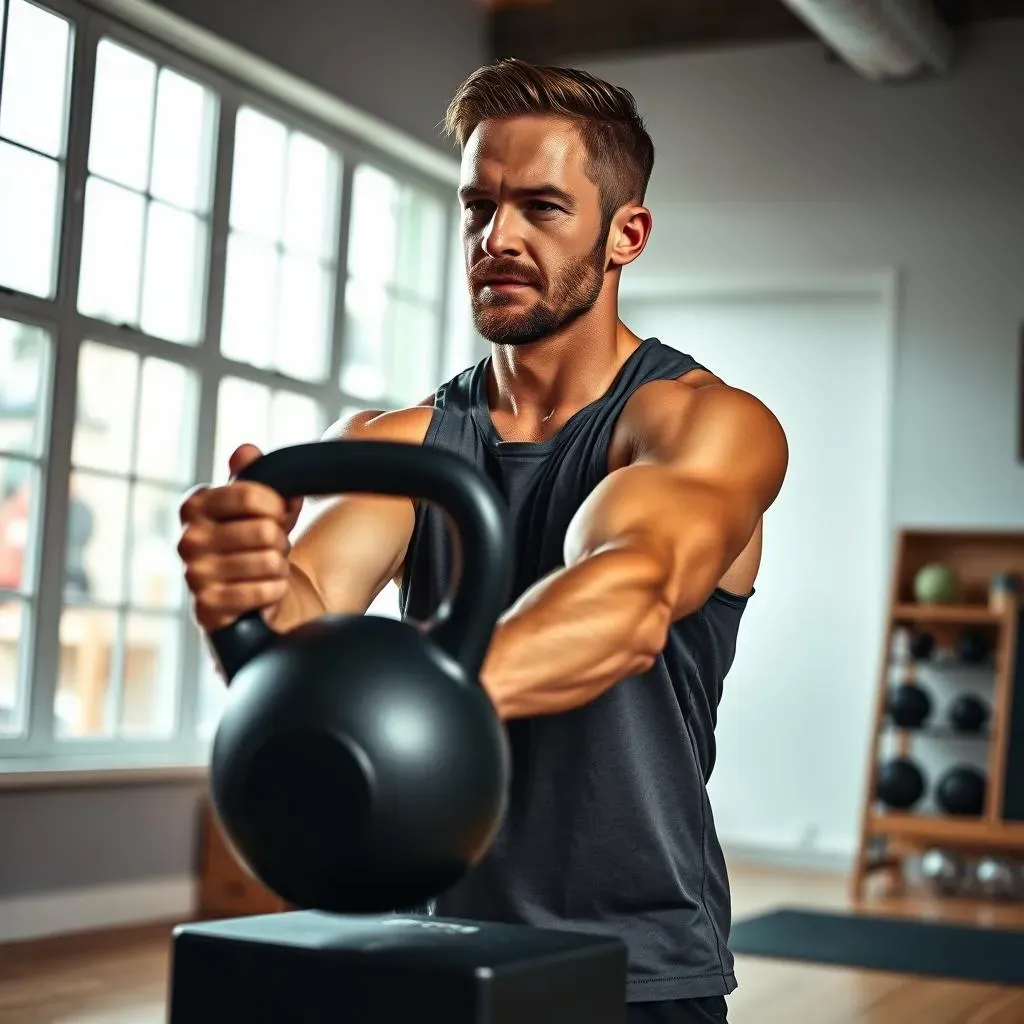
Beyond the Basics: Advanced Kettlebell Chest Exercises and Variations
Beyond the Basics: Advanced Kettlebell Chest Exercises and Variations
Ready to take your chest training to the next level? Let's explore some advanced kettlebell exercises that will really challenge your muscles and push your limits. We'll move beyond the foundational moves and delve into variations that target different muscle fibers, building strength and definition in new ways. One fantastic option is the kettlebell decline press. This variation increases the intensity by shifting the weight distribution, emphasizing the lower chest muscles. Find a slightly declined surface – a sturdy bench tilted downwards will do nicely. Perform the press as you would normally, but you’ll feel a significant difference in how your lower pecs are engaged. For an even greater challenge, try incorporating pauses at the bottom or top of the movement to increase time under tension and boost muscle growth. If you're finding the standard presses a bit easy, why not try incorporating a resistance band for added resistance?
Another excellent exercise to add to your arsenal is the kettlebell fly. Lie on your back with your feet flat on the floor. Hold a kettlebell in each hand, arms extended towards the ceiling. Slowly lower the kettlebells out to the sides, keeping a slight bend in your elbows. Squeeze your chest muscles to bring the kettlebells back to the starting position. This movement focuses on the inner chest muscles, helping to create a fuller, more defined chest. Remember to maintain a controlled movement throughout, avoiding any jerky motions. Want to focus on toning your chest? Check out our guide on toning your chest at home.
- Kettlebell Decline Press
- Kettlebell Flyes
- Kettlebell Chest Press with Pause
Now, let's spice things up with some unilateral exercises. Unilateral training (using one arm or leg at a time) is a fantastic way to improve balance, coordination, and strength. It also helps to identify and address any muscle imbalances you may have. A great unilateral chest exercise is the single-arm kettlebell floor press. Perform the exercise as you would normally, but this time using only one kettlebell. This requires more core stability and control, making it a more challenging exercise. Focus on maintaining proper form and a stable core to prevent injury. For those seeking a more advanced challenge, consider incorporating plyometrics into your routine. This involves explosive movements that can help to increase power and strength. Looking for a full-body workout? Check out our best chest workout at home.
Remember, consistency is key. Start slowly, focusing on perfect form before increasing the weight or difficulty. Listen to your body and take rest days when needed. Remember, you're not just building muscle; you're building a stronger, healthier you. Progressive overload is crucial for continued muscle growth. This means gradually increasing the weight, reps, sets, or difficulty of your exercises over time. This keeps your muscles challenged and prevents plateaus. To learn more about effective home workouts, check our detailed guide on effective home chest workouts.
Exercise | Sets | Reps |
|---|---|---|
Single-arm Kettlebell Floor Press | 3 | 8-12 per arm |
Kettlebell Decline Press | 3 | 8-12 |
Kettlebell Flyes | 3 | 12-15 |
